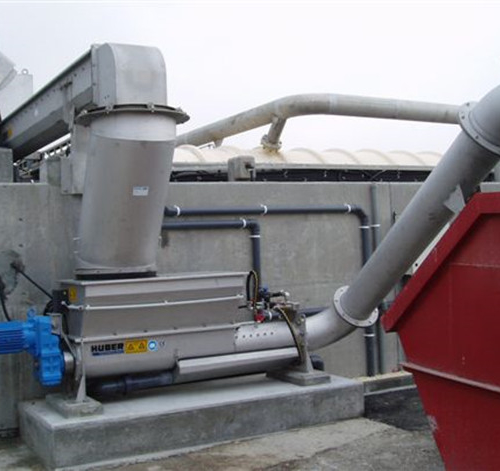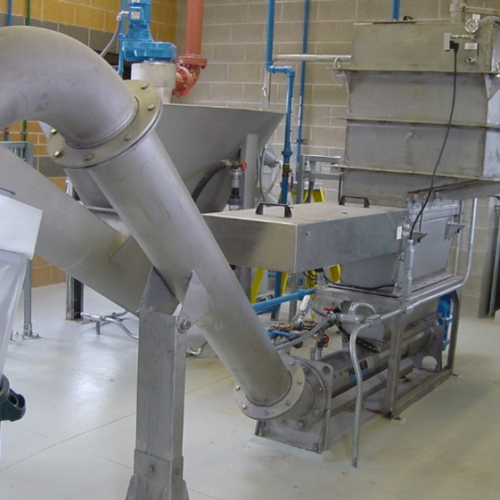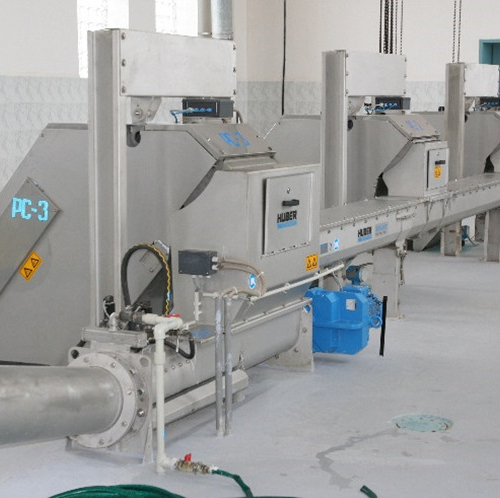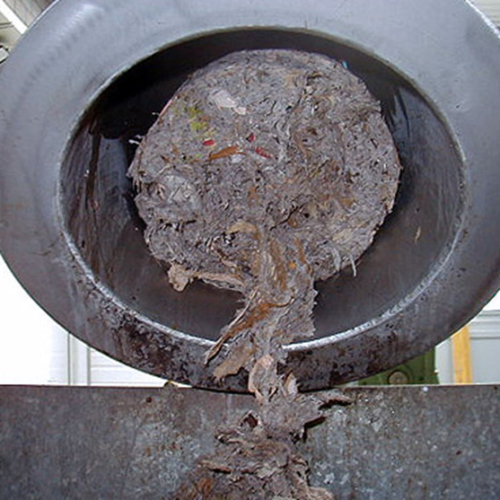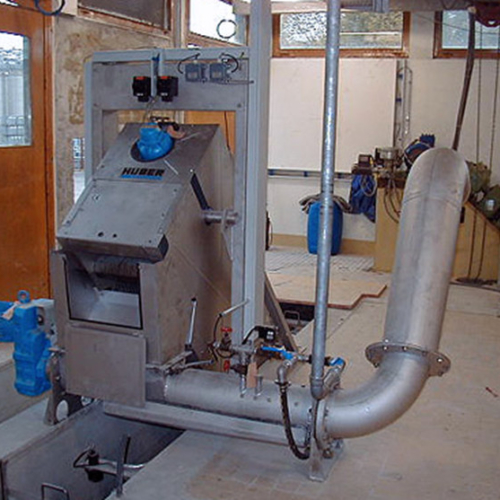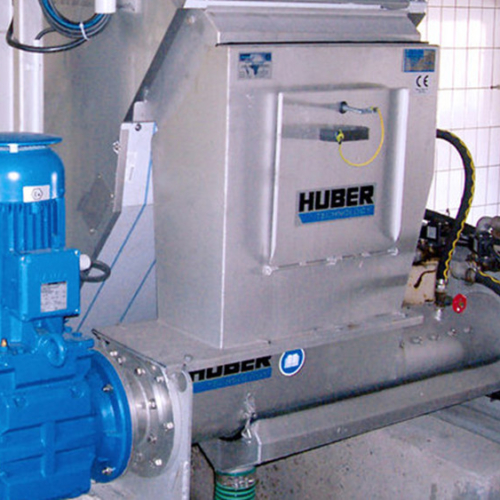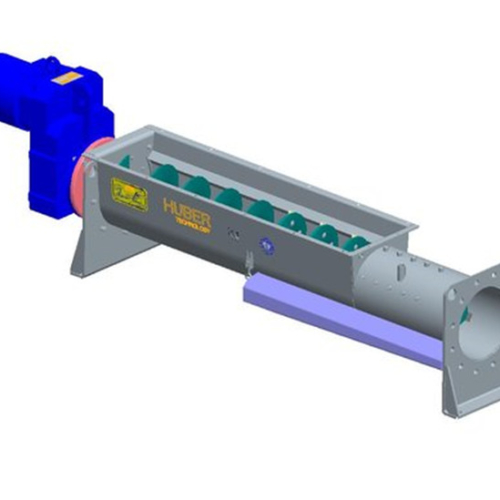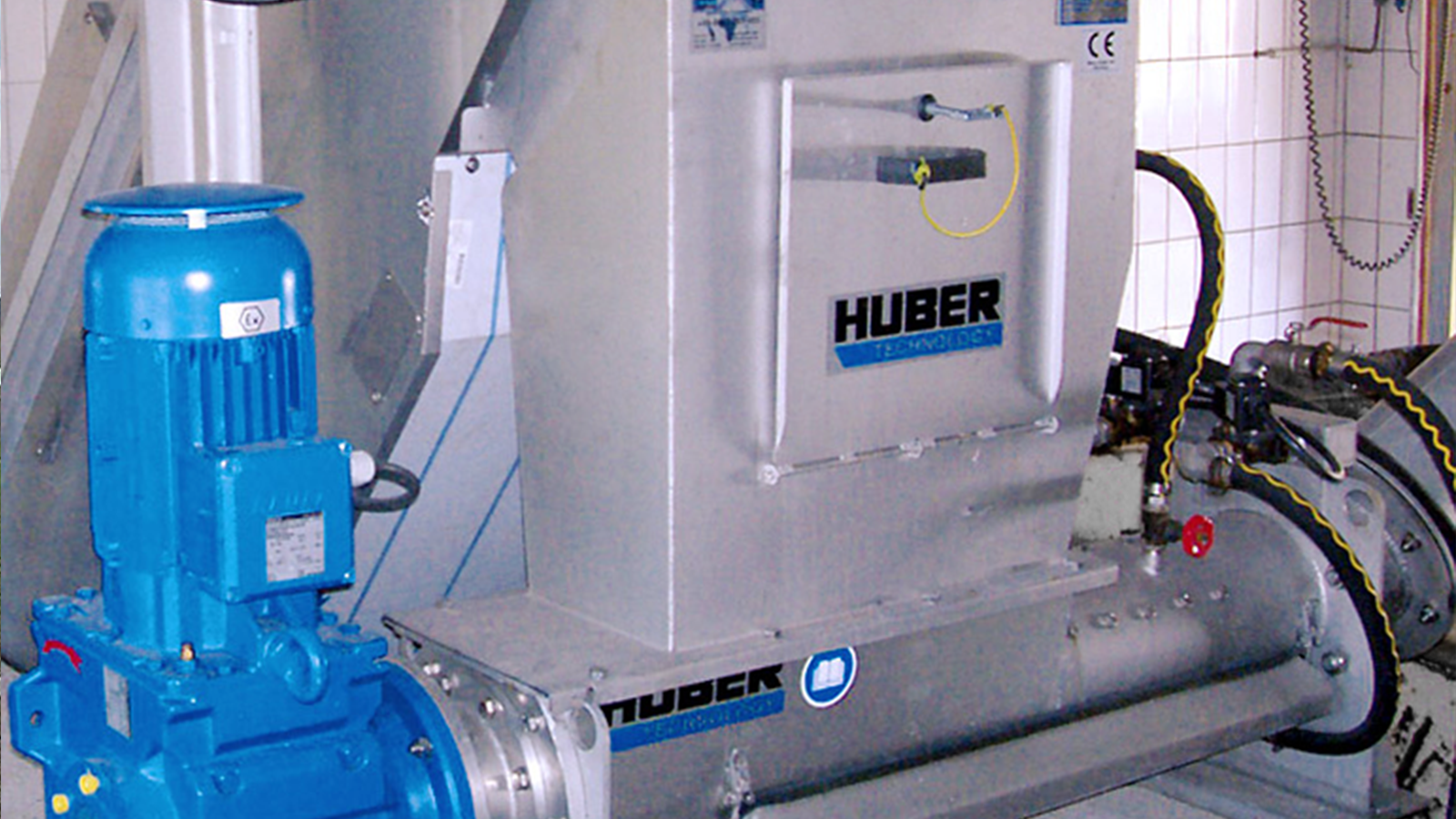
Wash Presses
Hydroflux Epco can supply a comprehensive range of screenings wash presses to convey, wash and dewater screenings from step screens, inclined drums, band screens and coarse screens.
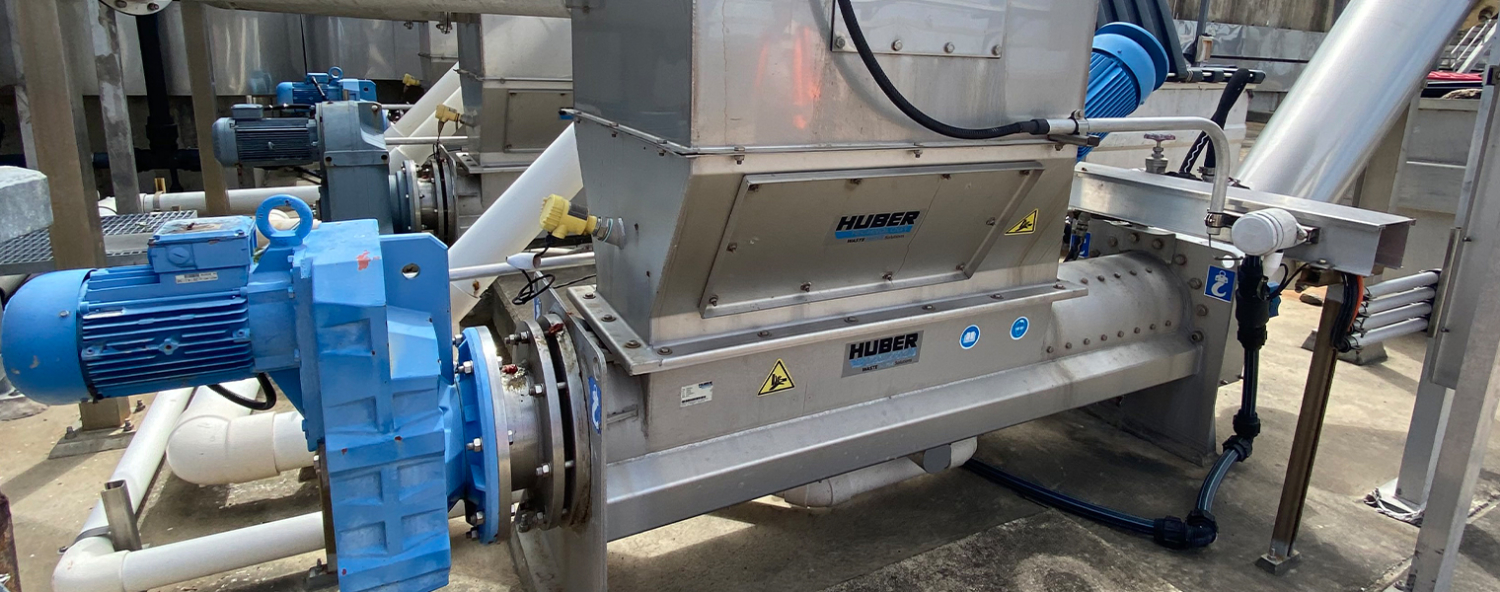
The WAP series is a cost effective screenings wash press designed liquefy organics and hence maximise organics removal from the screenings.
The WAP will produce excellent screenings quality and will dewater to 45% DS.
The WAP/SL series is an advanced wash press that includes stirred tank technology to liquefy organics and hence maximise organics removal from the screenings. The screenings will be dewatered to 40-45% DS with 3% residual organics.
Various sizes of machine are available to suit most sewage treatment plants with the largest unit able to handle over 12m3 /hr. All structural parts, including the screw, are made of stainless steel to prevent corrosion.
Find out more
The screenings to be treated are discharged directly from a screen or conveyor(e.g. screw conveyor) into the feed trough of the Wash Press.
A robust conveying and compacting screw transports the screenings into the wash zone where they are exposed to directed and powerful turbulence created by automatic introduction of wash water(used water). The turbulence achieves perfect separation of organic particles and thus effective screenings washing.
The washing intensity and cycles are individually adjustable. The washed screenings are further conveyed in the rising pipe to the press zone where they are pressed and dewatered by the compacting screw to aDS content of 35 – 45 %. The wash water from screenings compaction which is rich in carbon is discharged back into the waste water stream.
Automatic cleaning of the wash water collecting tank under the machine is possible. The washed and compacted screenings are finally transported through the conical discharge pipe into suitable container.
- Very clean screenings due to volume, weight and disposal cost reduction of up to 65%
- Compaction up to 35 % DS
- Screenings processing capacity of up to 12 m3/h
- Screened wastewater or process water can be used as wash water
- Sturdy, durable design
- All structural parts, including the screw, are made of stainless steel to prevent corrosion
The WAP/SL operates in a batch mode.
Screenings either drop into the launder tank directly from a screen or conveyor, or they are flushed into the tank through a launder channel. After a batch of screenings has been fed, the tank is filled up with wash water and agitated for an adjustable period by means of an impeller. The fecal matter is loosened and removed from the screenings by high turbulence and shear.
After the washing cycle has been finished, an automatic valve opens and the wash water drains through perforations in the trough. It returns, together with the fecal matter to the wastewater flow. A screw in the trough conveys the screenings towards the mouth of a tube where they are, as an additional option, rinsed with spray water. The screw pushes the screenings through the pressure zone where they are compressed, dewatered and compacted before they are finally discharged through the discharge pipe into a suitable container.
In the case of the WAP-SL-HP, the screenings are compacted in a second press zone then dewatered under high pressure to a DS content of up to 60 %. Especially wear-resistant and solid materials in the conical high-pressure unit ensure reliable long-term operation of the plant.
Automatic cleaning with water of the wear collecting tank under the machine and the complete high-pressure unit is possible. The washed and compacted screenings are finally transported through the conical discharge pipe into a skip.
- Very clean screenings due to volume, weight and disposal cost reduction of up to 85%
- High-intensity washing in a launder tank
- Washed screenings quality < 20 mg BOD5 / gDR
- Compaction up to 45 % DS
- Screenings processing capacity of up to 12 m3/h
- Screened wastewater or process water can be used as wash water
- Sturdy, durable design
- All structural parts, including the screw, are made of stainless steel to prevent corrosion

